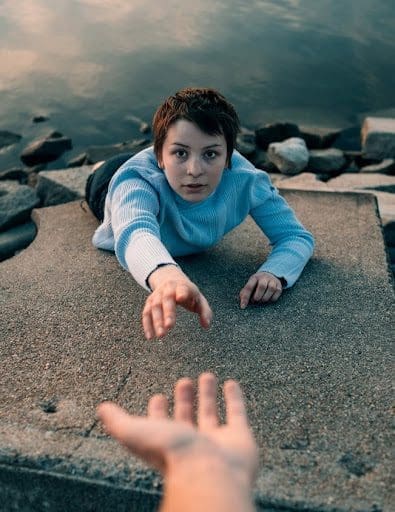ISDC 2021 Highlights: Can Trust be Modeled?
The International System Dynamics Conference (ISDC) convenes practitioners who demonstrate what’s new and developing in their fields with System Dynamics. This section of the WiSDom Blog, “Conference Highlights,” asks system dynamicists to spotlight key presentations and innovations presented at the conference.
– Conference Highlights Editorial Team: Saras Chung, Will Glass-Husain, Jack Homer, Sara Metcalf, and Remco Peters with coordination by Christine Tang
This highlight by Dr. Pascal Gambardella discusses the use of “trust” in modeling in presentations shared at ISDC.

Can Trust be Modeled?
What we trust, whom we trust, and how we build and maintain trust are central questions for all individuals and organizations. Several of the presentations at the 2021 International System Dynamics Conference (ISDC) grappled with modeling trust.
I had previously given some thought to this topic. At the 2020 ISDC, David Lounsbury and I (the two of us co-leaders of the System Dynamics Society’s Special Interest Group in Psychology) led a workshop on modeling soft constructs such as reputation. We introduced Daniel Diermeier’s “trust radar” factors (transparency, rapport, expertise, and commitment) and used two of them in a model of Diermeier’s “reputational crisis”.
I’m glad to see that other System Dynamics modelers are thinking about this topic as well. The 2021 ISDC presentations I attended addressed trust in the contexts of government, business, and personal relationships. I’ll address each of these.
Trust in Government:
Jorge Valencia and his team modeled the effect of trust in managing COVID-19 in Colombia. Jorge said the government’s blundering actions have caused people to lose trust in its ability to handle the crisis. His team’s approach relied on two models, one qualitative and one quantitative.
The qualitative model was an adaptation of Nobel Prize-winner Elinor Ostrom’s model of trust, in which trust, reputation, reciprocity, and cooperation form a reinforcing loop. Trust in government increases when it communicates the right information to the public. The problem is deciding which information is the most effective: realistic but offering hope. The COVID epidemic offers a perfect example of this dilemma. 
Valencia’s quantitative model uses a Susceptible-Infected-Recovered (SIR) structure with a trust variable. The effectiveness of government mandates is improved when people have some confidence in them and thus cooperate. The resulting reduction in infections and deaths would build even more trust.
Valencia said the Colombian government’s poor response to the pandemic led to protests and worsened the crisis. He asked the audience for help in creating a “trust index” to promote best government practices during a pandemic. I wondered if Diermeier’s “trust radar” might help here.
Trust in Business:
In a talk on structural racism, Peter Hovmand said “collaboration moves at the speed of trust.” This reminded me of Florian Kapmeier and Jeroen Struben’s presentation exploring trust dynamics during early business alliance activities.
Alliances allow businesses to share and combine resources, supporting innovation. However, knowledge exchanges can also cause trouble when one partner fails to fulfill certain obligations under the agreement. How can building trust early in the relationship mitigate this risk?
Kapmeier and Struben’s simulation model includes several major mechanisms and feedback loops. For example, greater management commitment to the alliance can improve partner contributions and interactions, building trust. Also, meeting expectations under the alliance can help to build trust. On the other hand, trust naturally tends to decay over time.
Among the various insights, a counterintuitive one stood out to me. The authors said: “Strategies seeking to build early trust rapidly or to maximize openness may backfire.” This can happen if the partners don’t achieve the high aspirations set during an initial honeymoon period.
Trust in Relationships:
At the Student-Organized Colloquium, Josephine Musango said: “Building trust is key to building relationships for resilience.” I recalled these words when I heard Sarah Pritchard and Lucy Puckett later present on “the terrible bargain” in human relationships. This term, perhaps coined by feminist blogger Melissa McEwan, refers to a situation in which a man’s sexism forces a woman to choose between her dignity and a peaceful relationship. As McEwan puts it, “If I can’t trust you to care when I tell you you’ve hurt me, how can I trust you at all?”
What are the mechanisms that lead to this disparity in trust between men and women who initially respect each other? Pritchard, Puckett, and their co-author Andrew Brown created a causal-loop diagram to explore this question.
In it, we see how a man may respond defensively to potentially helpful feedback from his female partner about his sexist behavior. This antagonistic response may cause her to lose trust and subsequently share less, thus damaging the relationship.
After their fascinating presentation, David Lounsbury and I interviewed Pritchard and Puckett about their work and asked whether this model might apply to other types of relationships and situations.
Sarah Pritchard said, “It’s possible that the model might also apply to other forms of oppression, but we’ve framed it around sexism for now. It’s rooted in situations where there’s an oppressive power imbalance and stereotype threat against giving critical feedback.”
Lucy Puckett added, “It could apply to any sort of relationship in which there is a level of emotional investment, something at stake, that contributes to the power imbalance. Women are in a difficult situation, having to sacrifice their own safety, trust, and authenticity for the sake of maintaining a relationship.”
—
Pascal Gambardella, PhD, started his career as a mathematical physicist and now does research using System Dynamics and Neuro-Semantics. He co-leads the Psychology and Human Behavior SIG of the System Dynamics Society.
Check out the Society’s SIGs – including the Psychology and Human Behavior SIG
Recent Posts
Society Governance Updates
Society Governance Updates Welcome, Allyson! New President Allyson Beall King joined the Policy Council as our 2024 President. Her primary role is as director of the Washington State University School of the Environment, which focuses on regional ecologies and our...
Call for Presenters: Seminar Series
Call for Presenters: Seminar Series We at the System Dynamics Society are continually seeking vibrant and knowledgeable presenters for our ongoing Seminar Series. As we unfold the calendar, there’s always a place for more insights, experiences, and expertise to enrich...
Honoring Excellence: A Glimpse into the Awards of the International System Dynamics Conference
Honoring Excellence: A Glimpse into the Awards of the International System Dynamics Conference The International System Dynamics Conference brings together experts, practitioners, and students to exchange ideas, showcase real-world applications, and celebrate...
Upcoming Events

MIT System Dynamics Seminar | Approaches to Encouraging Health Exchange Participation
You are invited to attend the System Dynamics Seminar being held on Friday, April 26th from 12:30-2:00pm EST in the Jay W. Forrester conference room, E62-450, or via Zoom: https://mit.zoom.us/j/94114971874 (Password: SDSP24). Our guest speaker will be Soheil Ghili...
Recent Business cases
Solving Bottlenecks in Dairy Production Facilities with System Dynamics
Solving Bottlenecks in Dairy Production Facilities with System Dynamics EXECUTIVE Summary FrieslandCampina faced potential bottlenecks in production due to the merging of two factories. They hired SD&Co which employed system dynamics simulation models to predict...
A Design Value Calculator: A System Dynamics Boardgame
A Design Value Calculator: A System Dynamics Boardgame EXECUTIVE Summary Product design is a specific form of complex innovation that touches all areas of an organization’s management. While entrepreneurs recognise the value of design, they often tend to focus...
The World Bank Uses System Dynamics to Identify Root Causes of Poverty
The World Bank Uses System Dynamics to Identify Root Causes of Poverty EXECUTIVE Summary Madagascar has one of the highest poverty rates in the world. In 2022, an astonishingly three out of every four people in Madagascar lived below the poverty line. Poverty has...




